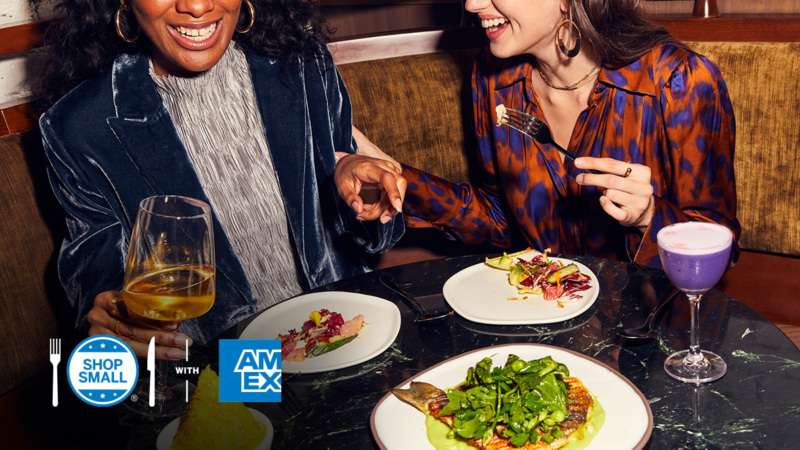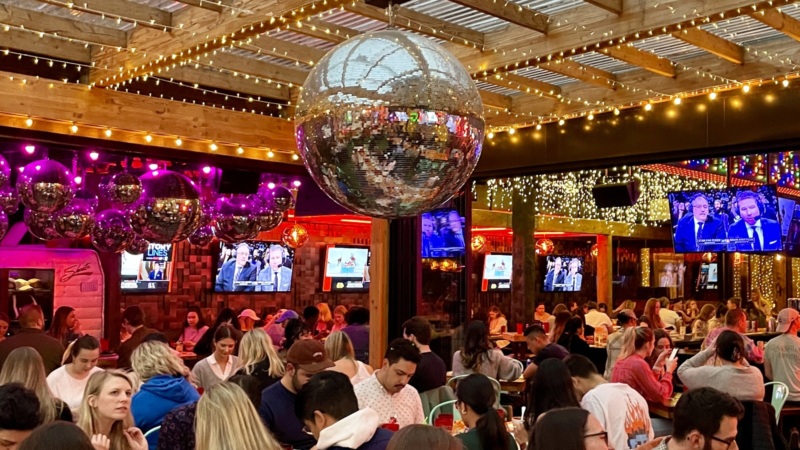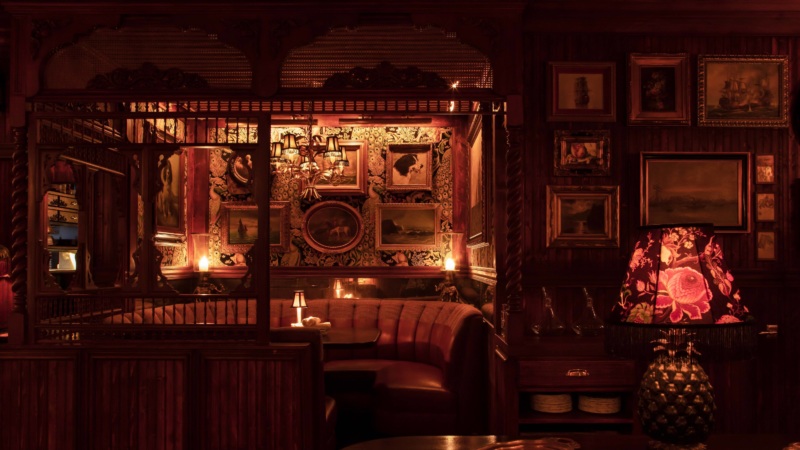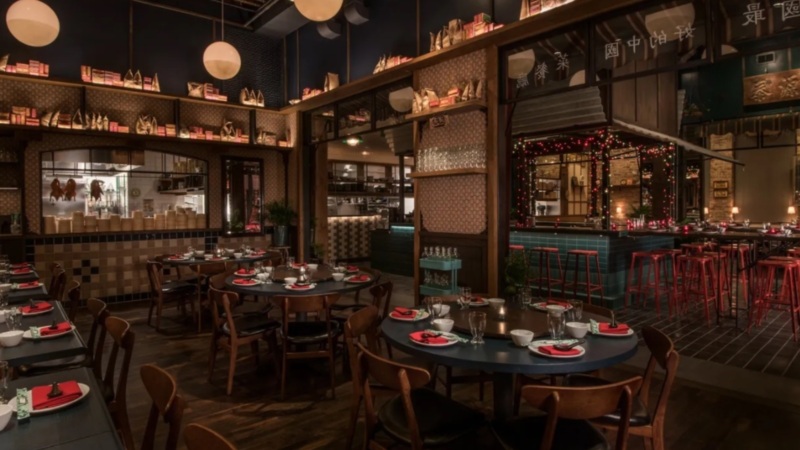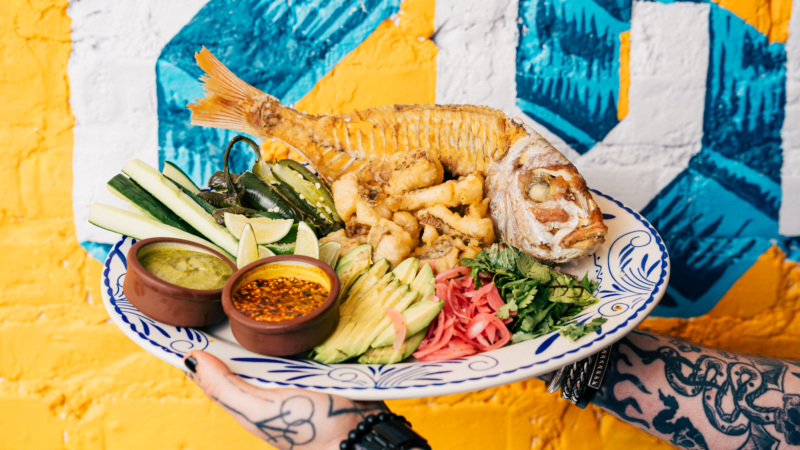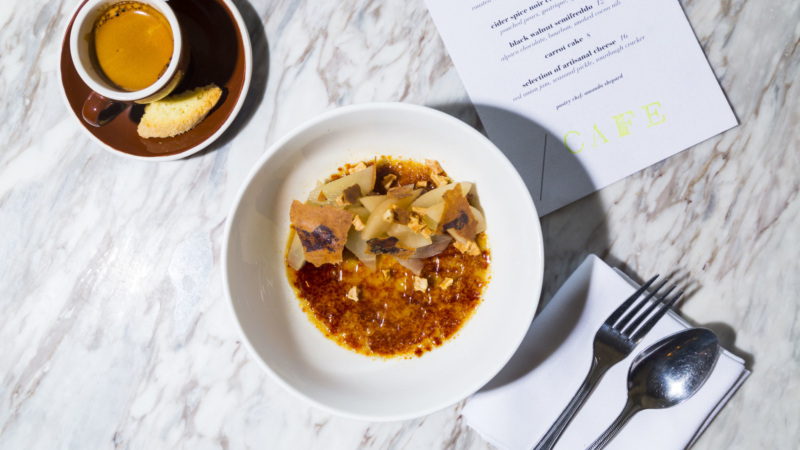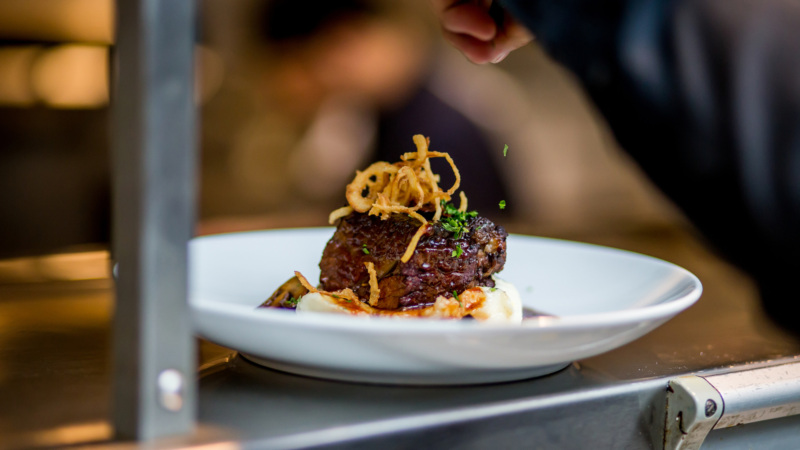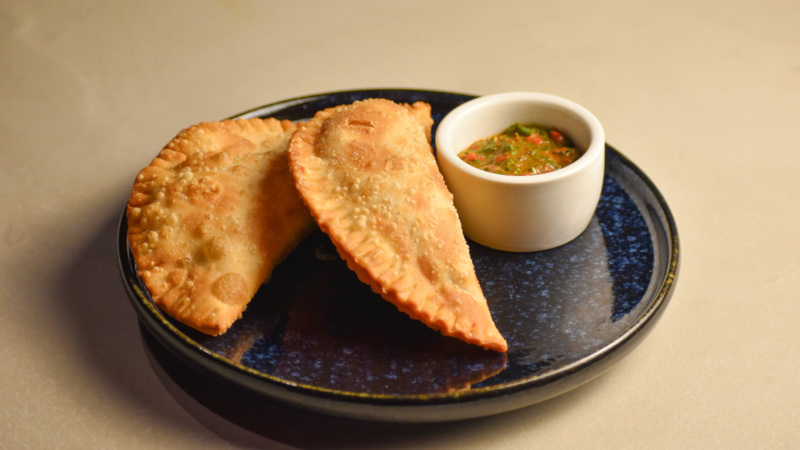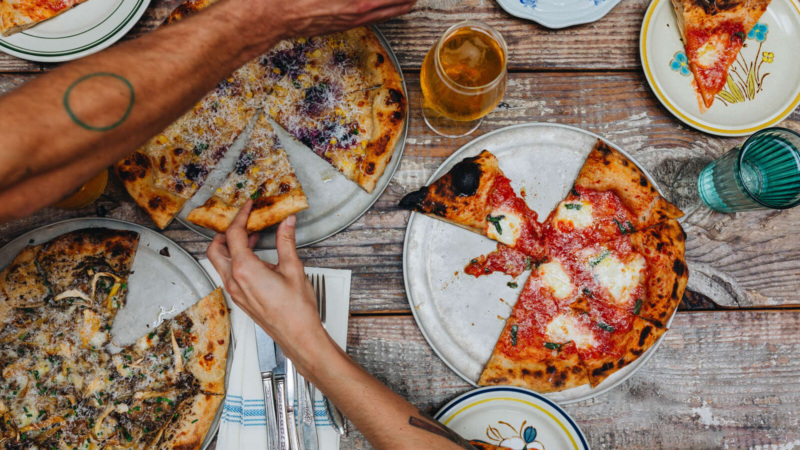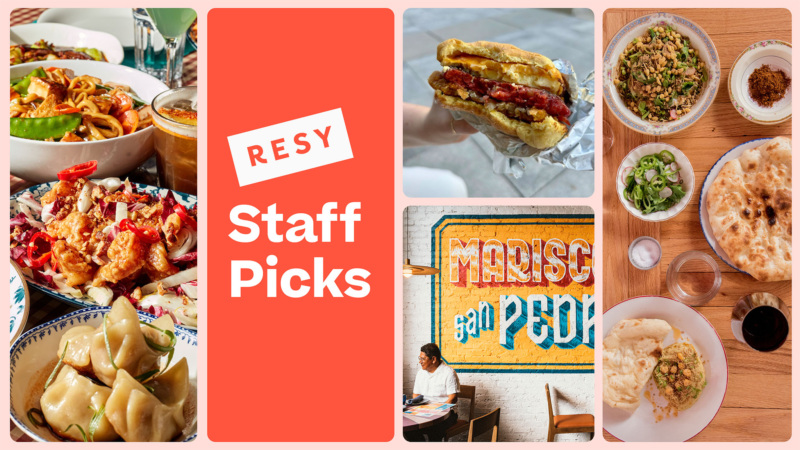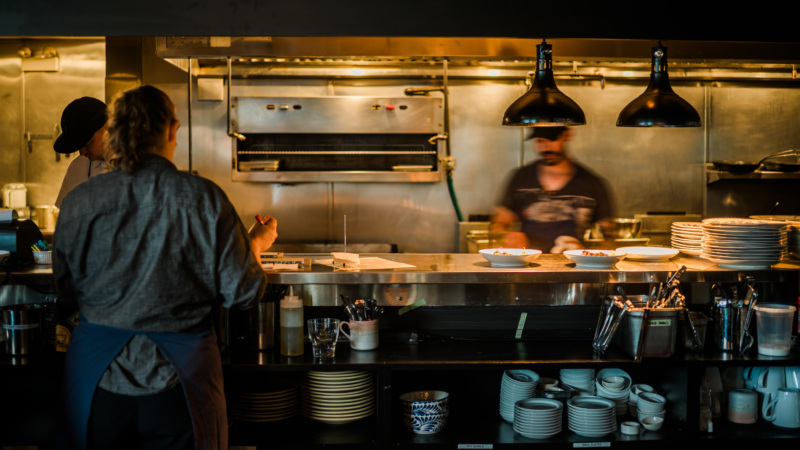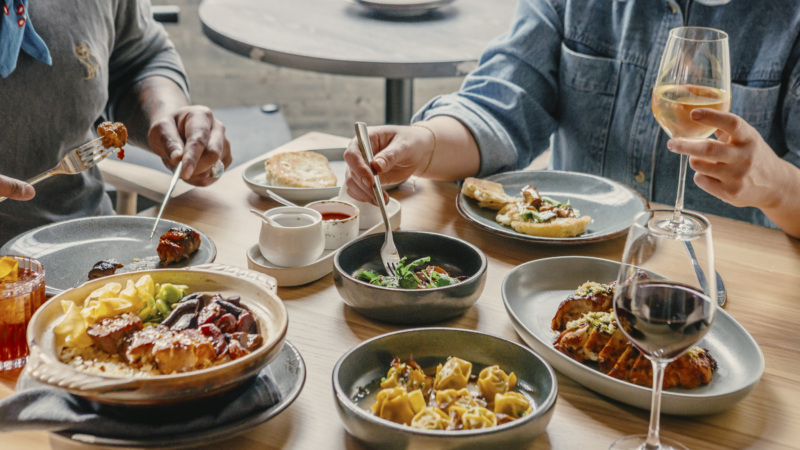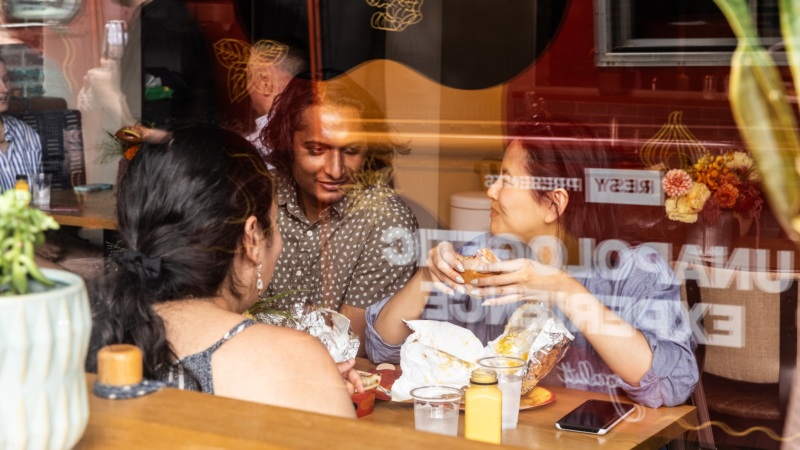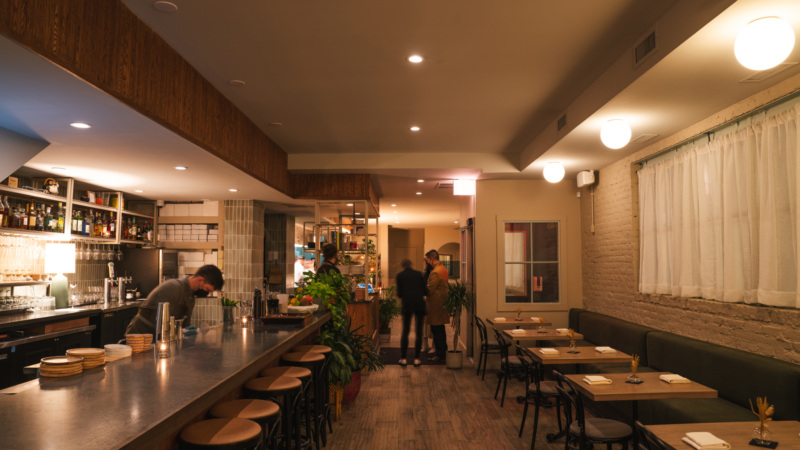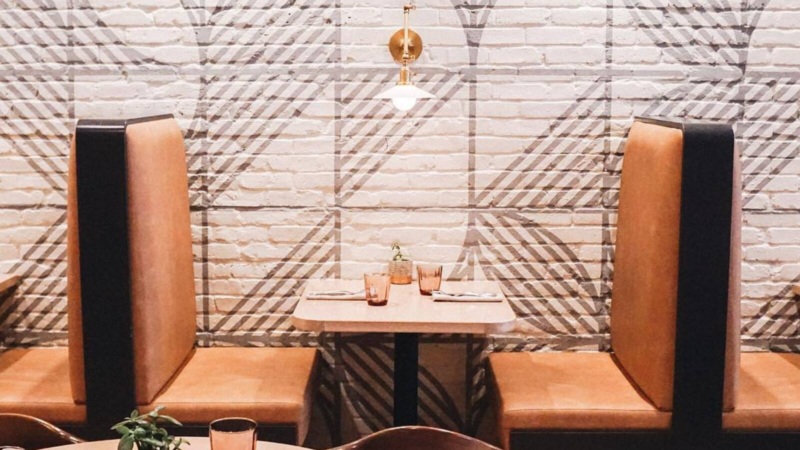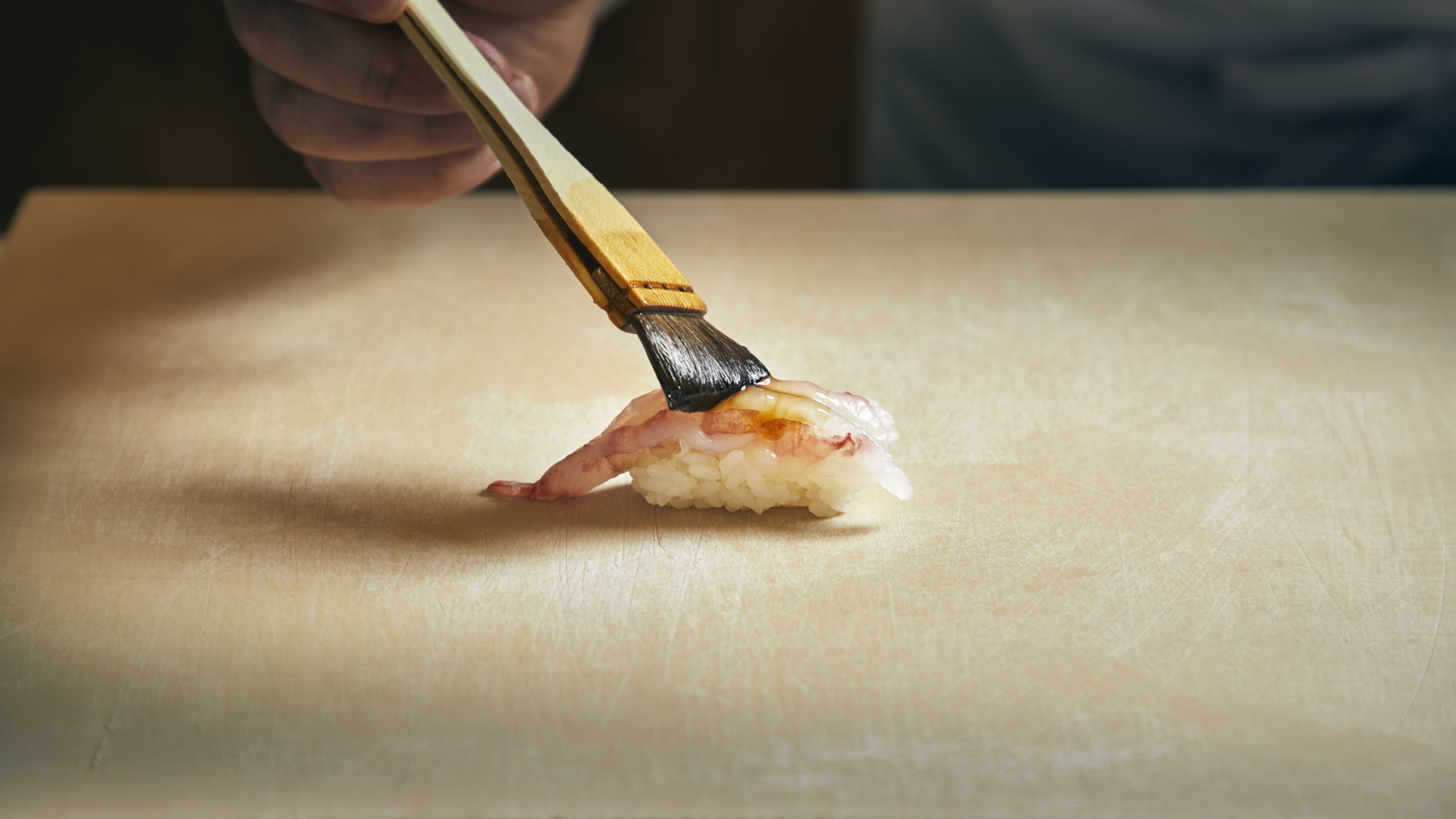
How Sangtae Park Is Changing the Way Chicagoans Think About Sushi
Chef Sangtae Park still remembers trying to convince people to try sushi omakase. It was 2011, and he had just opened his restaurant Izakaya Yume in suburban Niles, where omakase was offered as an option, in addition to the regular menu. At the time, few people knew about it, and even fewer were seeking it out. After several attempts to convince them, some regulars finally gave into Park’s gentle cajoling and gave the format a try. The chef shared his love for omakase one customer at a time.
Today, Chicago is experiencing a sushi omakase boom. The experience varies wildly, from hushed, intimate dining rooms that only seat a handful of people, to raucous performances in the center of the restaurant, to in-suite blowouts in upscale hotel rooms. But they all share a multiple-course format that highlights specific seasonal fishes and flavor combinations, in typically beautiful presentations.
After decades of working in sushi restaurants around Chicagoland (and convincing suburban customers to try omakase), South Korea native Park and his wife Kate Park opened Omakase Yume in the West Loop in 2018, followed by sister izakaya TenGoku Aburiya in 2020.
Omakase Yume is a jewel box of a space, with just six seats, and three seatings per night. The atmosphere veers more toward the quiet and serene end of the spectrum, all the better to keep the focus on the fish, which is prepared and served in the traditional Edomae style. We talked to the Parks about how they fell in love with raw fish, opening restaurants in the suburbs, and what omakase means to them.
Interview was edited for length and clarity. Kate Park translated several of Sangtae’s answers from his native Korean.
More on Sushi Omakase
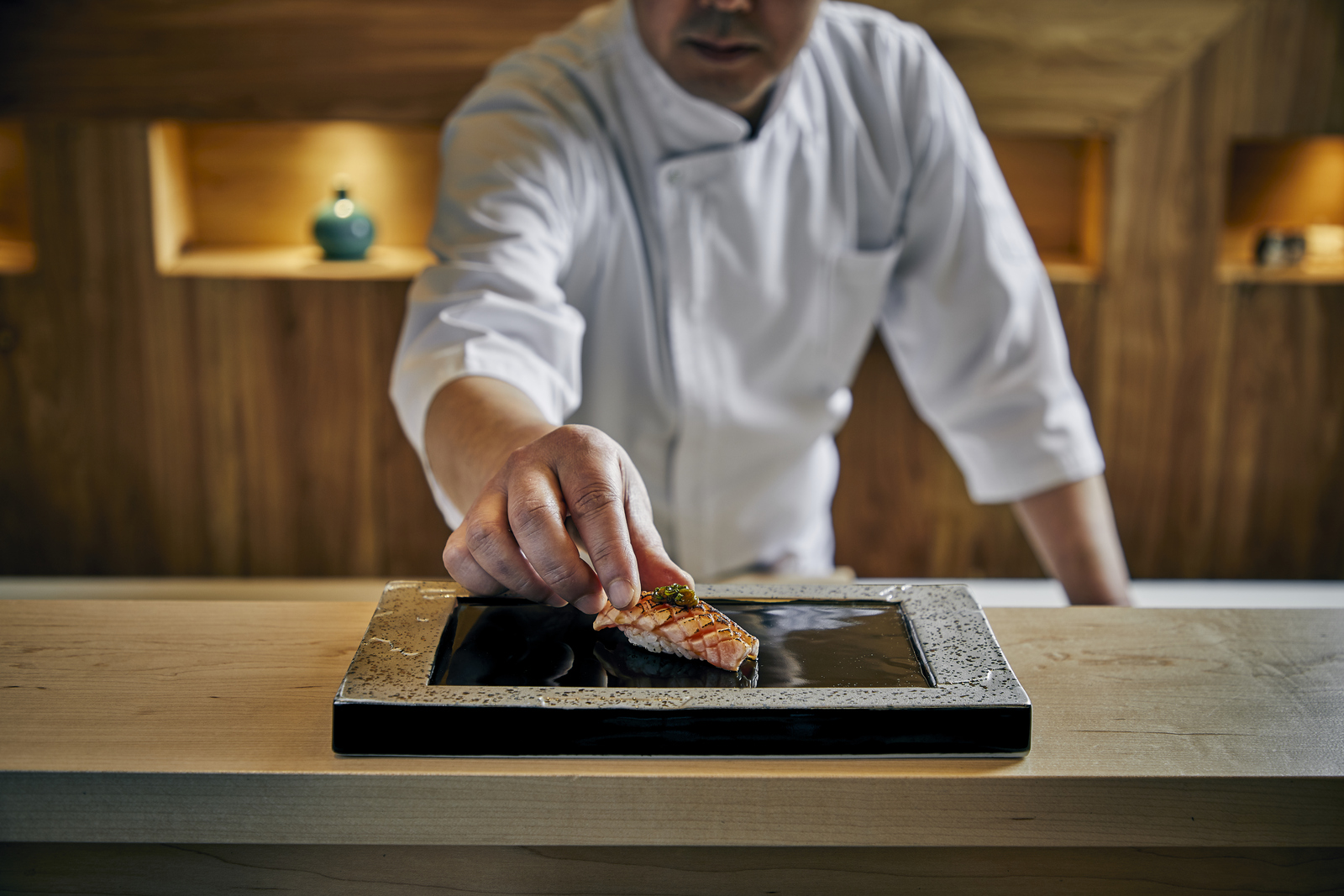
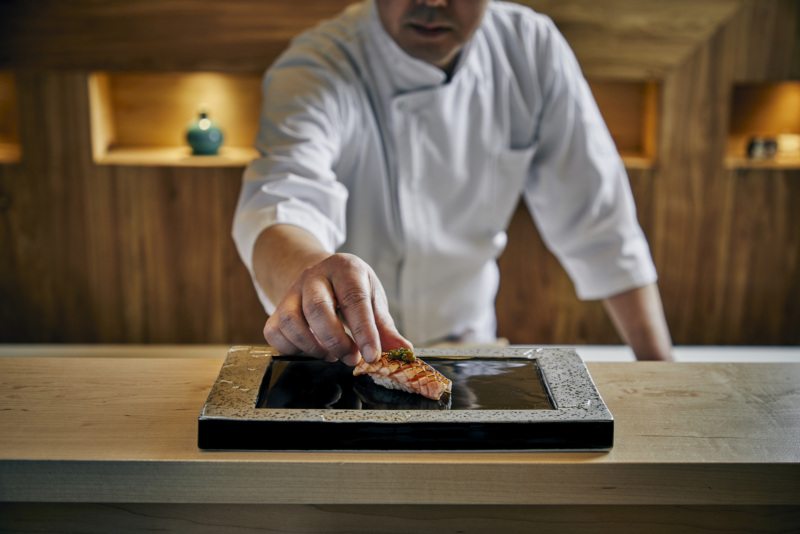
Resy: How did you fall in love with Japanese cuisine?
Kate Park: Chef Sangtae is from Busan, South Korea, so he grew up on the ocean and has loved fishing since junior high school. He was already eating raw fish all the time at home. When he turned 19, he worked in a Japanese kitchen, but wasn’t allowed to cut the fish — only onions. The stubborn head chef wouldn’t let him touch any seafood. But he wanted to learn, so after he finished work, he would buy a lot of fish and go home and practice. That’s how he built up his skills, by watching the chefs and going home and trying it himself. He worked at Japanese restaurants in South Korea for 12 years before coming here.
What did the journey look like after coming to the United States?
He worked at Japanese restaurants after he came to Chicago in 2000. He spent time at Mirai and Japonais as a sous chef, making a lot of sushi and nigiri. When Japonais closed, he decided to open his own restaurant. In 2006 he opened Sushi Badaya in Highland Park and six years later, after selling it, he opened Izakaya Yume in Niles.
What was different about Izakaya Yume?
When the restaurant opened in 2011, chef started serving sushi omakase. He was also doing omakase kaiseki, which is seasonal small dishes, sushi, soup, and rice. And he was serving a regular menu. But when he was running Izakaya Yume in Niles, he was always thinking and dreaming that he wanted to open a very intimate sushi omakase restaurant. “Yume” means “dream” in Japanese, and with Omakase Yume, finally his dream has come true.
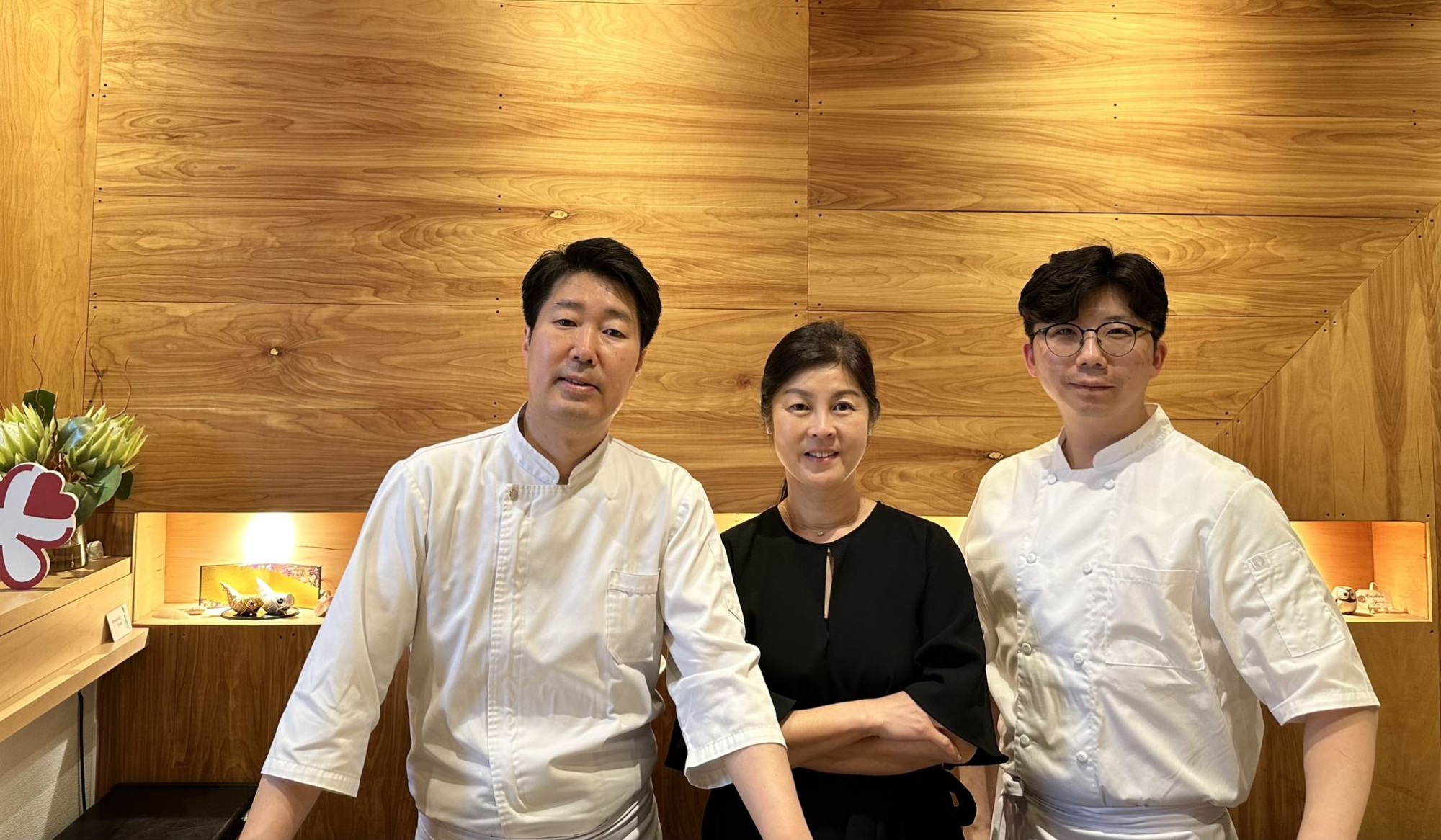
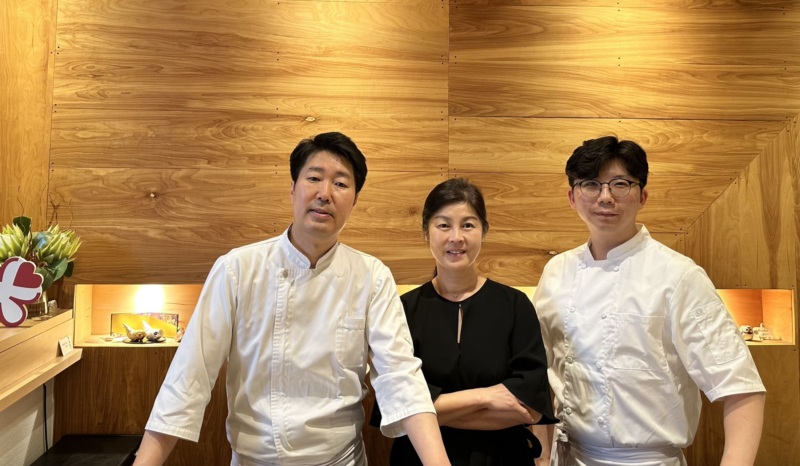
Was the omakase offering popular at Izakaya Yume?
No. Chef had an omakase menu, but people didn’t really request it. They didn’t know what it was. We had a lot of regular customers, so one day he decided, ‘Okay, I’m going to serve them omakase anyway.’ Once people learned what it was, then they wanted it.
What do you think about the increasing popularity of omakase in Chicago?
It’s better than before because people know omakase now. The more people who open up omakase restaurants, the better it is for the customers and the better it is for us, too. Now people know what omakase is, and they really want to try it.
For our restaurant, we can’t take more people because we only have six spots per seating, so we have a long waiting list. Sometimes it can be a 200-300 person waiting list and we only seat 18 people per night. Other restaurants are seeing a lot of customers who want to experience this way of eating. Now is the right time for omakase.
What’s special about an omakase restaurant compared to a regular sushi restaurant?
For us, we are serving omakase because we can show all the special, seasonal fish. If we don’t serve omakase, we can’t guarantee that we’ll use all the fish because people don’t order it. With omakase, [chef] can pick all the ingredients and seasonal fishes for the customers because he knows it’s good. He wants to share all these good ingredients with the customer. There are some very, very rare fishes that he orders so he can introduce them to people and they can enjoy it. Chef builds a menu every day with 13 or 14 different kinds of fishes, sometimes even up to 20.
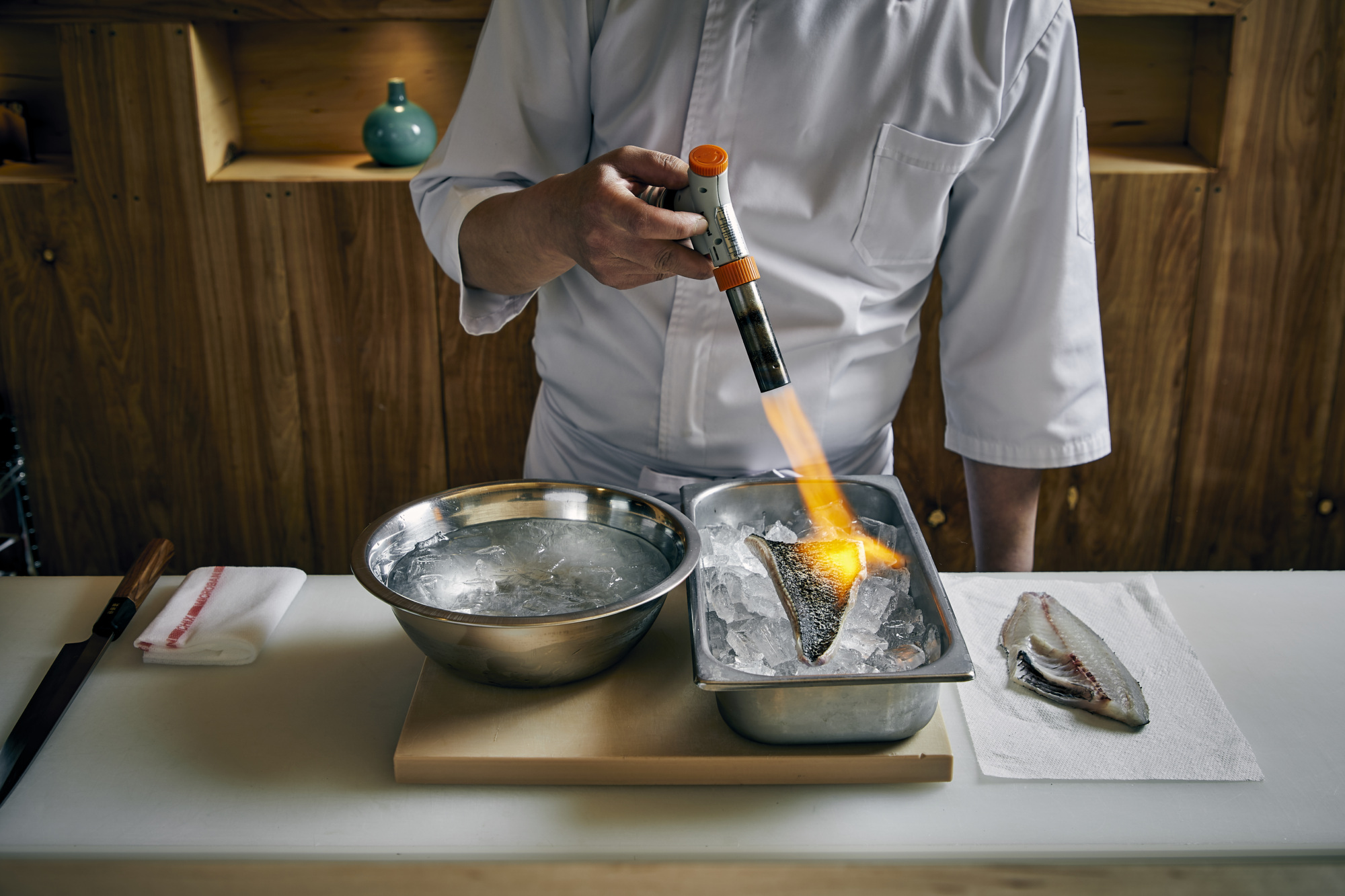
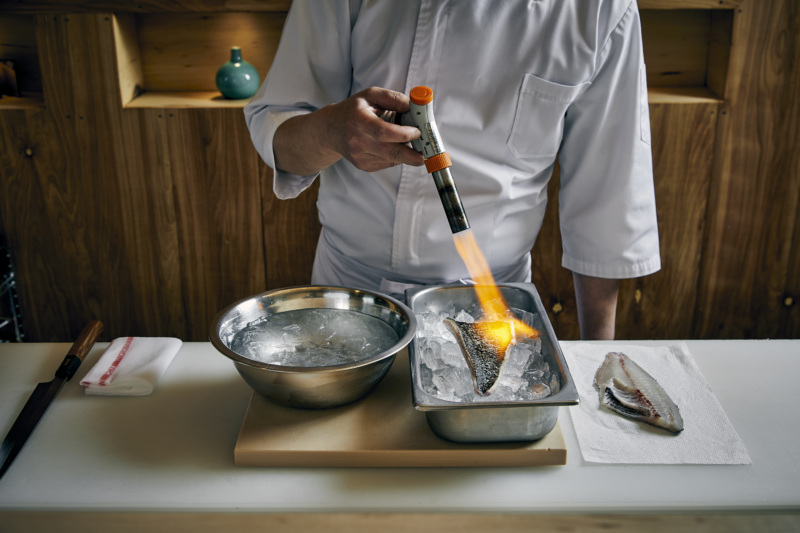
What is the omakase experience like at Omakase Yume? Do you have any dishes that are always served?
When Sangtae was growing up, his mother would make kimchi, but rinse it off for him and wrap hirame in it. So our first course is always hirame with kimchi purée because of that childhood memory. He’s always thinking about the food and the taste, so the rice is important, the fish is important, and the garnishes are important. He doesn’t want to overpower the flavor of the fish — he hopes people will enjoy its natural flavor.
I haven’t been to other omakase restaurants in Chicago, but I have heard from customers that we are very traditional and quiet. When you come in, it’s very comfortable, like you’re visiting mom’s house. The decor is very simple — I don’t want it to feel fancy. The feeling is very natural, because we’re trying to show that natural flavor in the food.
Are there any special considerations when preparing each course? Where do you get your ingredients from?
We have some ingredients that are shipped from Spain and a few are sourced locally, but most of our ingredients are from Japan. The fish is from Japan, the very high-end rice is from Japan, and our garnishes are also from Japan. We go to Japan every year and visit the fish market where we get our fish and talk to the people who catch it.
Each ingredient has its own techniques to be prepared. For example, kinmedai, or golden eye snapper, has a specific way to clean and filet it. To prepare it, you have to use hot water and ice water before using salt and a torch to give it its sear. Chef is always studying and dreaming about the food, the fish, the garnish, and how they combine. That’s how he always keeps it moving.
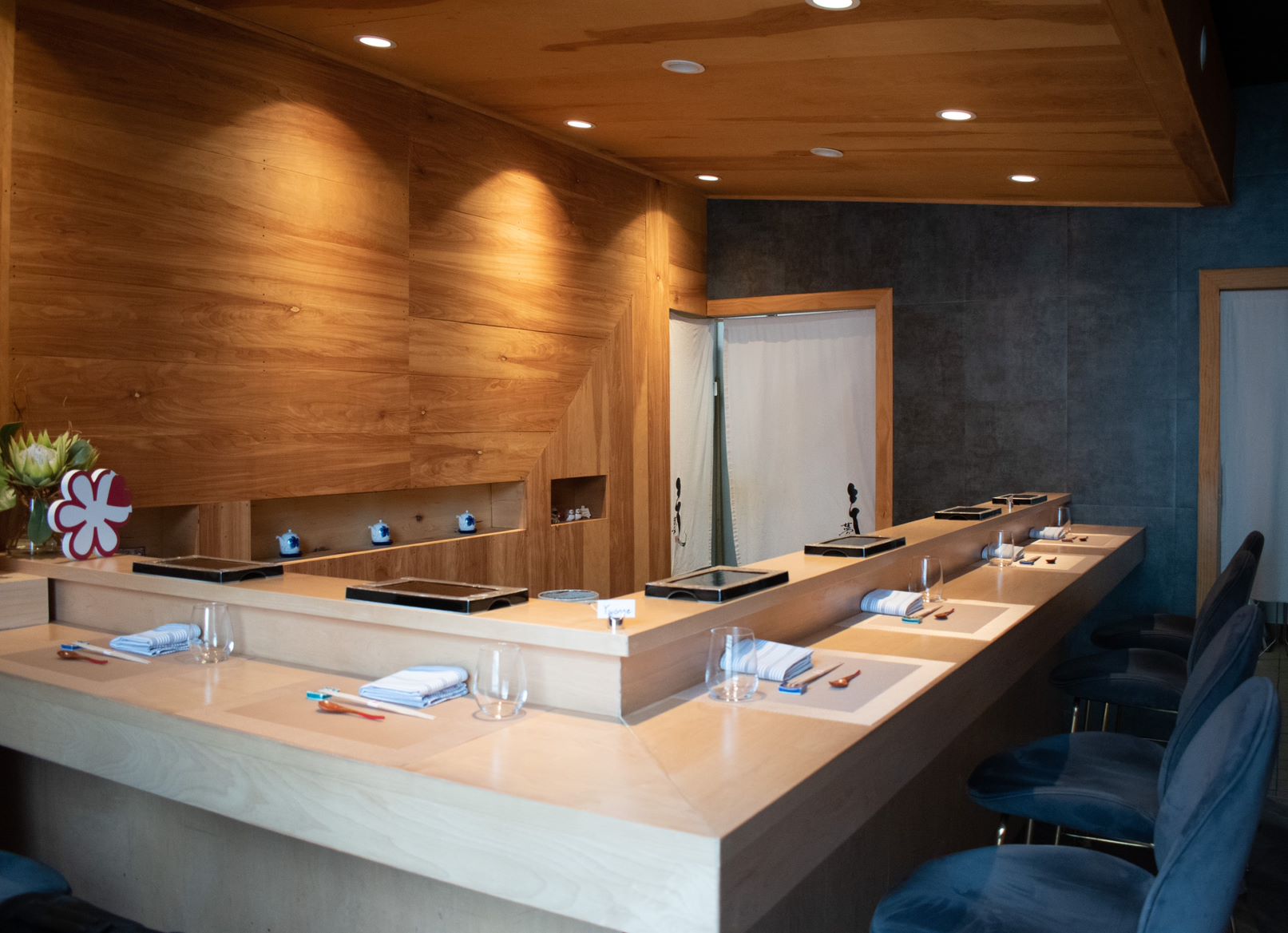
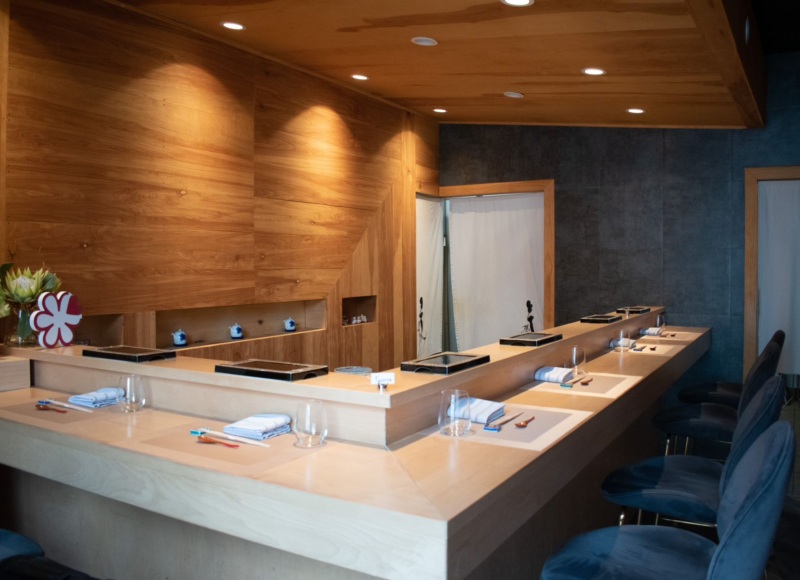
Why do you think people are seeking out omakase now?
I think people know about it now. It’s fresh and it’s good and you can eat a variety of fish. The chef is serving it right away — there’s no time between the server picking up the food and bringing it to the table, so the quality and temperature are preserved. Also, people can watch everything. That is a good experience and that is why people love omakase. When you sit at a table, you don’t see how the chef is making sushi.
Most people know about the standard fishes, but if you go to Japan, [you’ll see some of the less-common] fish we receive all the time. I think that’s incredible. People really appreciate it. The industry people, the shipping companies and the fish markets in Japan, everybody is working together to make this happen.
Grace Wong is an award-winning journalist covering food and travel. Since working at the Chicago Tribune, she has freelanced for publications like Better.net, The Philadelphia Inquirer, and Block Club Chicago. Follow her at @GraceWong630. Follow Resy, too.
Discover More
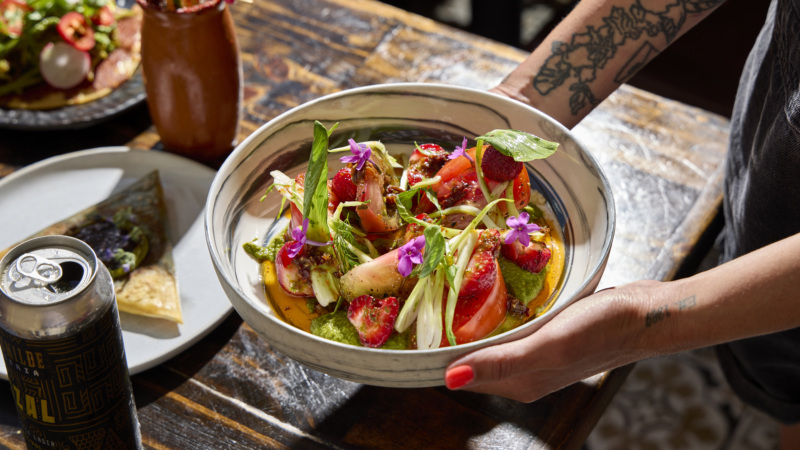
Stephen Satterfield's Corner Table

